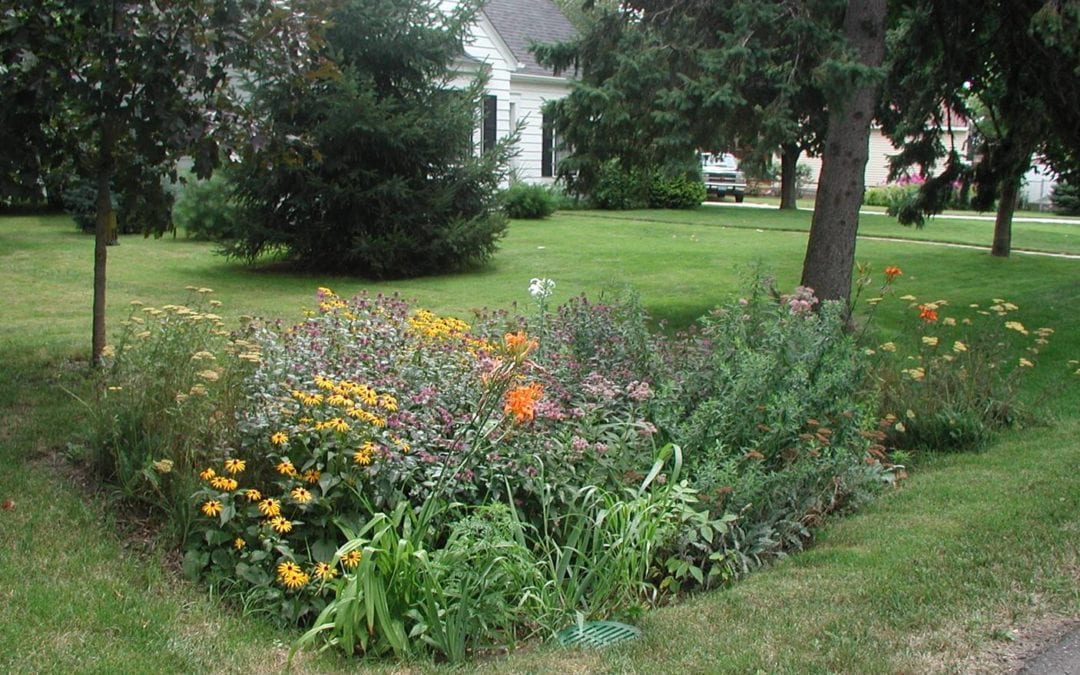No one can deny that it has been a wet spring. Official totals of rain and snow from April 1st through Monday add up to 29.58 inches! Compare that to last year’s 11.47-inches over during the same time frame. And that doesn’t take into account the areas that were hit hard by the spottier thunderstorms. Some neighborhoods received over 5-inches last Friday night. Others got nothing at all. We hope that you didn’t suffer too much damage and that your basements and garages are dry. But when you get it, what can you do as a gardener to mitigate the damage of all of this moisture?
One thing to do is to divert the water from your roof and paved areas into a rain garden. There are misconceptions about what a rain garden does. Basically, it redirects rainwater from a downspout or driveway into a garden where the excess water can soak into the soil instead of seeping into your basement or running into the street.
The first step is to find the best site for your rain garden. It should be located at least 10 feet from your house and ideally in a low spot at the edge of your yard. Next calculate how big the garden should be. For soils in our area, count on at least 30% of the roof area that will drain into the garden. Using an old hose or some marking paint, delineate a curvilinear shape that is equal to or greater than that square footage.
What you will do next is the opposite of building a berm. Once the sod is removed, dig down 3 to 6 inches, using some of the soil to create a low wall at the bottom edges. Then spread and dig some compost into the soil.
Step two is more fun and less labor intensive-plant selection. A third to half of the plants should be sedges. Carex or Scripus are grass look-alikes that don’t mind wet roots. The rest of the plants can be forbs, which are herbaceous, non-grass, flowering plants. There are lots of natives that will be great for this. A few favorites are Milkweed, Beebalm and Blazingstar. If your garden is very large, you can use a few shrubs or small trees as well. Serviceberry, Black Chokeberry and Ninebark are all suitable. Plant a little more densely than usual.
When everything is planted, apply a thick layer of shredded bark mulch. And like any other garden, this one will need to be watered for the first couple of years. Weed as needed until the plants fill in and do your clean-up in the spring instead of the fall.
A rain garden isn’t a pond. It isn’t a bog. It is simply a beautiful garden that serves an important purpose. And it proves that form and function can both be stars in your landscape.


